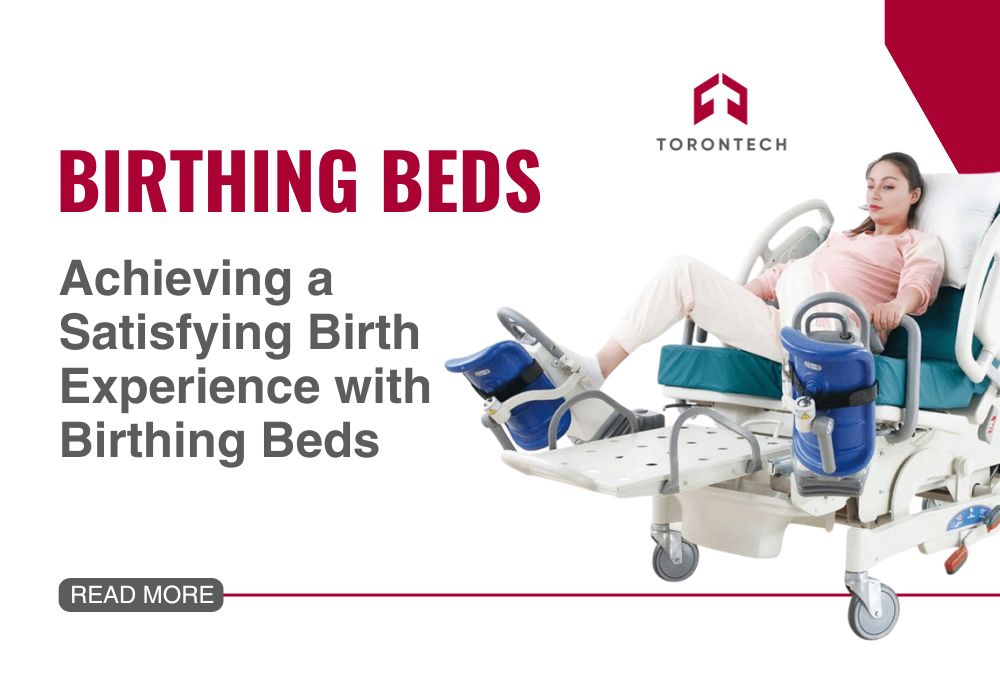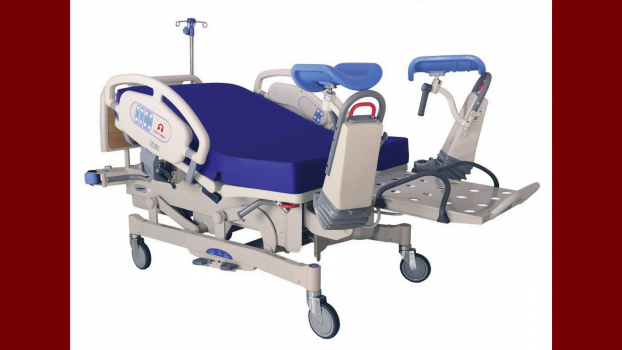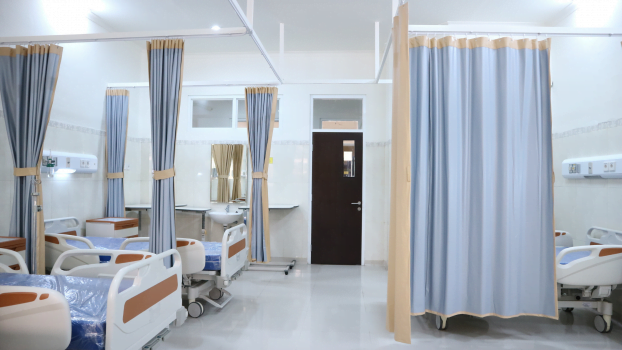Creating a comfortable and supportive environment for mothers during labor is essential for a positive birthing experience. Birthing beds also known labor and delivery beds play a crucial role in achieving this goal. They offer flexibility, safety, and comfort, making the entire process smoother for both mothers and medical staff. But how do these beds enhance the birthing experience?
We will explore the various ways in which birthing beds contribute to a better labor and delivery process. From providing multiple birthing positions to ensuring the mother’s safety, you’ll discover the numerous benefits of these specialized beds.
The Importance of Comfort and Flexibility During Labor
Birthing beds are designed to offer maximum comfort and flexibility during labor. One of the main advantages is their ability to adjust to various birthing positions in hospital bed settings.
This flexibility allows mothers to find the most comfortable position, whether it’s lying down, sitting up, or even squatting. Adjusting the bed to different positions can help reduce discomfort and make the labor process more manageable.
In addition to comfort, birthing beds provide essential support. Features like adjustable backrests and leg supports ensure that mothers can maintain effective birthing bed positions throughout labor. These adjustments can help in progressing labor more naturally and efficiently. Have you considered how these features could improve the birthing experience at your hospital?
Another significant aspect is the ease of movement. Hospital birthing beds are equipped with features that make it easy for medical staff to assist during delivery. Removable sections and easy-to-use controls ensure that the bed can be quickly adjusted as needed, providing better access and support during critical moments. This not only enhances the mother’s comfort but also improves the efficiency of the medical team.
Birthing Positions in a Hospital Bed
Choosing the right birthing positions in a hospital bed can significantly impact the comfort and progress of labor. Birthing beds are designed to accommodate a variety of positions, allowing mothers to find what works best for them. Here are some common positions and how they can benefit the birthing process.
1. Sitting
Lower the bed to its lowest setting so that you can comfortably rest your feet on the floor. Sitting on the bed allows for intermittent fetal monitoring and can provide a break from standing. This position is more comfortable than lying flat on your back during contractions and can also be used with an epidural.
2. Semi-Sitting
This position allows you to rest in an upright posture that uses gravity to help the baby descend. It can be adjusted to resemble a chair, making it easier for the baby to move down. This position can be effective for maintaining an open pelvis and is also compatible with epidurals.
3. Supported Standing/Leaning
Raise the bed to its highest height and rest your arms and head on the top. This position takes advantage of gravity to assist the baby in descending. It allows for support from a partner or medical staff to apply counter pressure or massage the back, which is helpful for back labor. This position is not suitable for those with an epidural.
4. Squatting
Squatting widens the pelvis, encouraging the baby to move down. You can use the bed for support by holding onto the side or using a squat bar if available. This position provides excellent leverage and can be highly effective during the pushing stage.
5. All Fours / Hands and Knees
Also known as the hands-and-knees position, this can help relieve back pressure and encourage the baby to move into a better position for birth. The bed can be flattened for a traditional hands-and-knees position or adjusted to provide support while you kneel.
6. Side-Lying
If you need to lie down, lying on your side is often more comfortable and helps keep the pelvis open. This position can be used with a peanut ball or pillows to support the legs and is compatible with an epidural. It allows for rest and provides access for back massage or counter pressure.
Using the right birthing bed positions can make a significant difference in the labor experience. By offering multiple options, birthing beds allow mothers to choose the most comfortable and effective positions for their unique needs. This flexibility not only enhances comfort but also supports the natural progression of labor.
Birthing Bed Help Post-Birth Comfort and Support
After the intense process of labor and delivery, providing mothers with proper comfort and support is crucial. Birthing beds are not only designed for labor but also play a vital role in post-birth recovery. Some ways in which these beds enhance comfort and support after birth can be seen below.
1. Adjustable Positions for Rest
Post-delivery, mothers often need to rest and recover. Hospital birthing beds can be adjusted to various positions, helping mothers find the most comfortable resting posture. Elevating the head or legs aids circulation and reduces swelling.
2. Skin-to-skin Contact
Immediate skin-to-skin contact between the mother and newborn is vital for bonding and breastfeeding initiation. The flexibility of birthing beds allows for comfortable and safe positioning, facilitating this crucial interaction.
3. Bed Rest After Birth
Postpartum recovery often requires extended bed rest. Birthing beds with comfortable mattresses and adjustable features provide necessary support, enhancing safety and accessibility during this period.
4. Facilitating Breastfeeding
Supportive positions are essential for successful breastfeeding. Birthing beds can be adjusted to help mothers find the best position for nursing, whether sitting up or lying on the side, making breastfeeding more manageable and less stressful.
5. Pain Management and Healing
The adjustable features of birthing beds help manage postpartum pain, allowing mothers to find positions that alleviate discomfort. Elevating legs reduces swelling, and adjustable backrests ease back pain.
6. Support for Medical Staff
The design of birthing beds also facilitates postpartum care by medical staff. Beds can be easily adjusted to optimal heights and positions for examinations and procedures, ensuring mothers receive the best possible care.
Birthing beds play a crucial role beyond labor, providing essential support during the postpartum period. Adjustable positions and enhanced comfort help mothers recover more efficiently and bond with their newborns in a safe, supportive environment.
Upgrade Your Maternity Ward with Torontech’s Birthing Beds
Investing in the right birthing bed can transform the birthing experience for both mothers and medical staff. The advanced features and unparalleled comfort provided by Torontech’s birthing beds ensure that your hospital offers the best possible care.
Torontech offers two main birthing beds you can choose. First Gynecological Examination Table Obstetric Birthing Bed ToronComfort™ 1000-Series, a versatile birthing bed offers exceptional comfort and support with features like an epoxy-coated frame, adjustable backrest, and double leg support.
Second, is Obstetric Birthing Bed ToronComfort 1010. Combining comfort with advanced technology, this model includes a detachable auxiliary table, V-cushion, power-assisted handrail, and adjustable bed height, making it a top choice for modern maternity care.
Both our birthing beds are designed to provide exceptional support, safety, and comfort, making them ideal choices for any birth bed hospital. These birthing beds not only enhance the comfort and safety of mothers but also improve the efficiency and effectiveness of your medical staff.
Please visit our website or contact us for detailed information. Explore our innovative birthing beds and other medical instruments to find the perfect solutions for your hospital’s needs.








